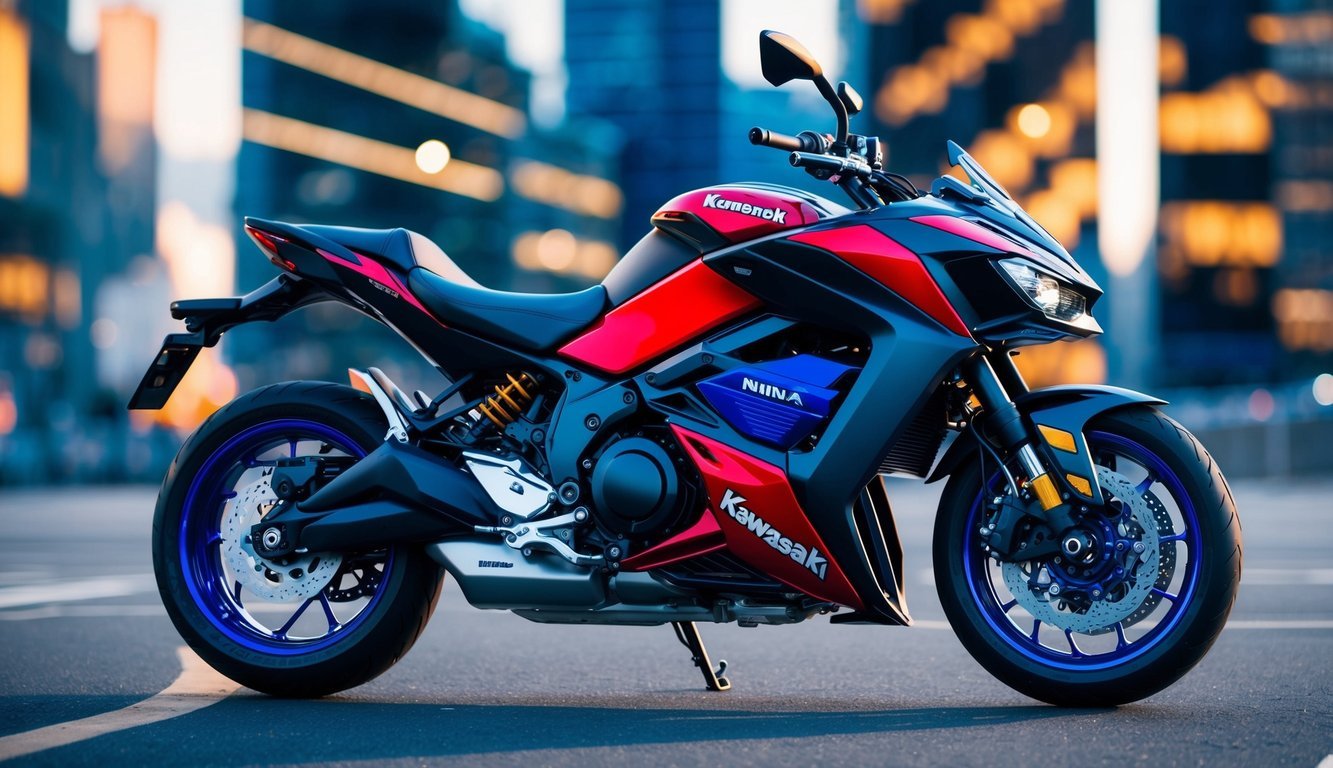Introduction to the Kawasaki Ninja 7 Hybrid
Could a single sport bike really handle all riding needs? The Kawasaki Ninja 7 Hybrid may be the answer, showcasing a blend of features that appeal to a multitude of riding styles.
It takes inspiration from the lively Ninja 500 and adds a substantial 121.2 pounds of electric motor and battery weight for that extra kick.
This bike is designed for city commuting and can launch off the line with superbike-like speed.
In essence, it merges the fuel efficiency akin to a smaller 250 cc motorcycle with the robust power of a liter bike—with an added convenience of reverse gear! This model has the potential to leave a mark on motorcycle history.
I hopped on this bike, eager to spend a weekend navigating the breathtaking roads of Southern California.
While the ride didn’t manage to captivate me completely, it offered enough thrills to make the experience memorable.
Riding Experience and Modes
Kawasaki set the scene nicely by flying me to San Diego, where I got a front-row seat to some outstanding dirt bike competitions.
The hospitality was top-notch, featuring cozy lodging, delicious food, and of course, the chance to experience the Ninja 7 Hybrid over a couple of days.
Now, let’s delve into how this intriguing motorcycle operates.
Initially, the array of buttons may seem overwhelming, as this bike operates without a left foot shifter and clutch lever.
You quickly learn its distinct layout after a few rides.
The Ninja 7 Hybrid is equipped with three primary riding modes, each delivering its own unique flavor.
In EV mode, the Ninja becomes a charming city commuter, ideal for shorter jaunts of about twelve miles depending on your route.
With a relatively compact 1.37 kWh battery, there’s no standard charging option; instead, it harnesses regenerative braking and engine power to recharge.
The electric motor puts out around 12 horsepower and is limited to the first four gears, holding speeds to around 42 mph.
Acceleration might be modest, but it’s more than capable for urban navigation.
This mode offers an automatic transmission, allowing for a smooth, effortless ride similar to that of an agile e-scooter—great for short trips.
My favorite mode quickly became Eco Hybrid.
This option allows for manual shifting with a thumb shifter or an automatic setting.
While it shifts gears early—often before hitting 40 mph—this mode excels in fuel economy, achieving a commendable 80 miles per gallon for city riding.
The automatic shifts can sometimes feel abrupt, but switching to manual allows for a more harmonious experience that suits longer rides.
The Sport Hybrid mode delivered the most thrills.
This option forgoes automatic shifting, allowing you to control gear changes using the + and – buttons.
The resulting shifts are quick enough to maintain excitement, though they can be a bit harsh when conditions aren’t ideal.
However, on twisting roads, the true sportiness of the bike shines through.
One thrilling aspect of Sport mode is the “e boost” button, which unleashes a short burst of power for up to ten seconds.
It’s easily accessible and adds an exhilarating edge, reminiscent of high-octane moments in action movies.
Kawasaki claims the Ninja 7 Hybrid can go from 0 to 60 mph in just 4.2 seconds, and during my ride, it certainly felt even faster.
Performance and Challenges
After logging around 300 miles over three days, I found the overall comfort acceptable.
While the seat is firm, it doesn’t hinder you from enjoying a full tank without needing to pause for breaks.
On the flip side, I had some reservations regarding the switch from full electric to hybrid modes.
To shift from EV to HEV, you must be going under 16 mph.
While riding in electric mode, I often found myself merging onto faster roads, only to discover the gasoline engine wouldn’t kick in until I slowed down.
This led to a few frustrating moments.
Weighing in at 502.7 pounds, the Ninja 7 Hybrid is certainly on the heavier side for a sport bike.
This added weight and longer wheelbase can make handling in tight mountain roads a bit of a challenge, somewhat diminishing the experience.
I also found the array of buttons a bit distracting.
There were moments when I inadvertently activated the high beams instead of shifting up, which can impact comfort—especially at higher speeds.
Aesthetically, however, I felt the bike missed the mark.
Its understated silver paint didn’t do much to catch the eye of passing riders.
A bolder color choice could have given it a more striking presence on the road.
Considering pricing, the Ninja 7 Hybrid comes with a starting price of $12,499, which is a step up from the base model of the Ninja 500 SE ABS.
While the innovative technology is noteworthy, it’s a significant investment that might require reflection.
In summary, the Ninja 7 Hybrid offers a lot of promise.
It’s well-suited for early adopters looking for a tech-savvy commuting option while still enjoying spirited weekend rides.
It stands on the brink of greatness, impressing on paper even if it has yet to fully fulfill its potential in practice.
As hybrid technology continues to evolve, Kawasaki has the opportunity to refine and enhance future models.
Just as the first-generation Toyota Prius transformed into a benchmark choice, the Ninja 7 Hybrid could become an extraordinary motorcycle.
While I have a genuine appreciation for this bike, it didn’t quite strike a deep emotional chord with me.
With some careful improvements, Kawasaki is clearly on the right path.


